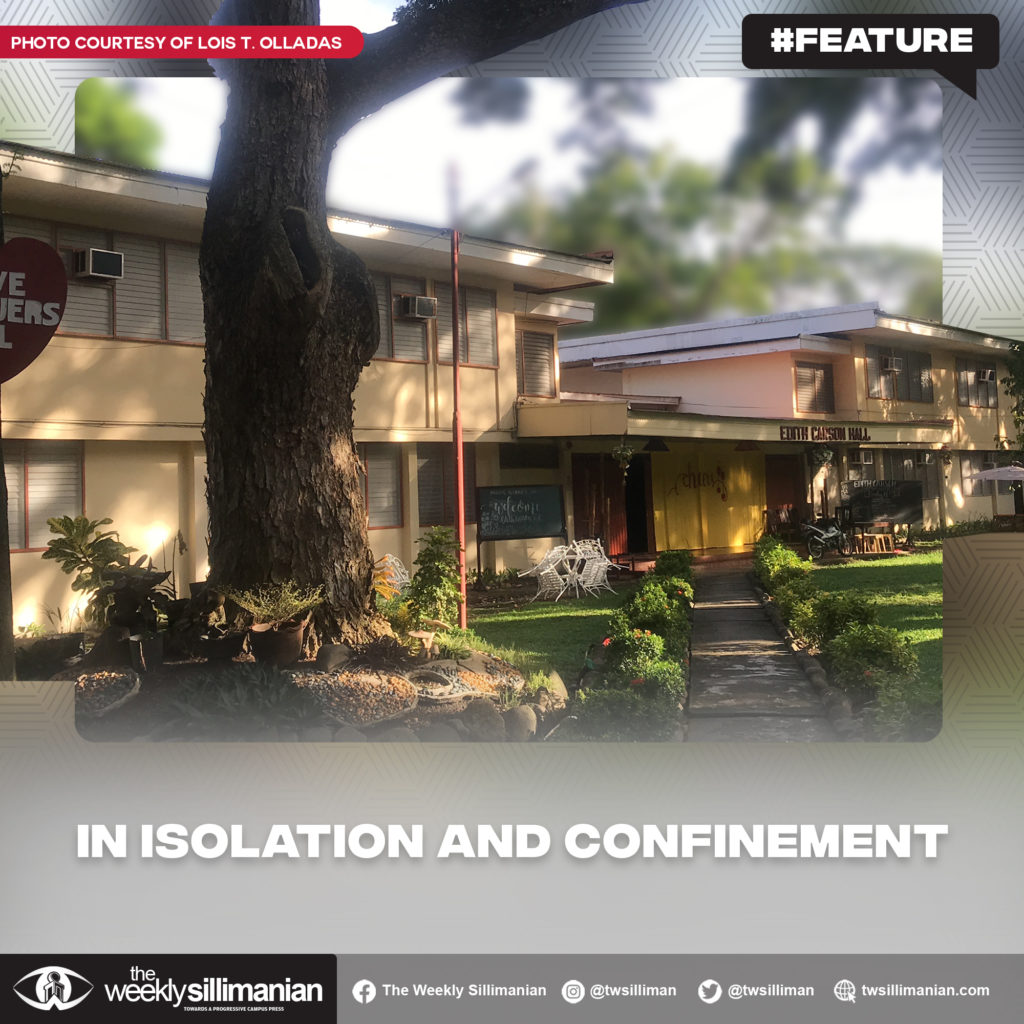by Maria Franciss Nikole Elli | October 17, 2021
The university opens its gates once more for chosen individuals after a year of hiatus. This time around, it’s unlike the usual one filled with students frolicking the fields or sitting amongst the pavement outside the Luce Auditorium. With restrictions placed upon students having limited face-to-face classes, it’s mostly silent inside the confines of dormitories.
Since July, medical-related courses of the university began resuming face-to-face classes albeit limited. The dormitories such as the Edith Carson Hall are housing dormers once again, allowing up to fifty percent of the usual number of students in each room. The usual bigger rooms for eight occupants house only four now. If you remember going home early at exactly nine o’clock in the evening during the pre-COVID times, this time, dorm curfew is at exactly seven. The dining halls are mostly empty as well as dormers are not allowed to interact much during meals. For the most part, meals are sent individually to the rooms where one would eat in silence, perhaps even in retrospect of the memories one has.

But, the isolation is not just the catch. A COVID scare can be more threatening. Far from the comforts of home, the threat of contracting the virus on top of piling school requirements is not easy.
For a senior student, a registered medical technologist hopeful, it can be draining. A dormer shared how it is like to have limited face-to-face classes and reside inside the walls of Silliman. Her day begins at seven in the morning as she walks together with her fellow dormers to the Angelo King building near Silliman University Medical Center. The whole morning, she does laboratory work and gets dismissed during midday. Her day, however, does not end there. In the afternoons, she has scheduled online classes to attend. This repeats for four days, which comprises the “limited” face-to-face classes. By Friday of that same week, they begin their ten-day quarantine. During this period, they have to join synchronous classes online, answer activities, prepare for exams, and settle other requirements. This cycle of limited face-to-face classes and quarantines has become their usual now since they began last July.
Despite this, she deems it better for learning if the hours for face-to-face classes are extended. However, she also understands the risk of transmission among students.
The schools may be opening sooner than we expect. This means students may be back again on campus after over a year. For those who reside inside the campus, it may be more difficult than it used to be. The stay may now entail more quarantines and isolation; quite different from the thought of reuniting with friends again.


